The English Football Pyramid and Non League Football Explained
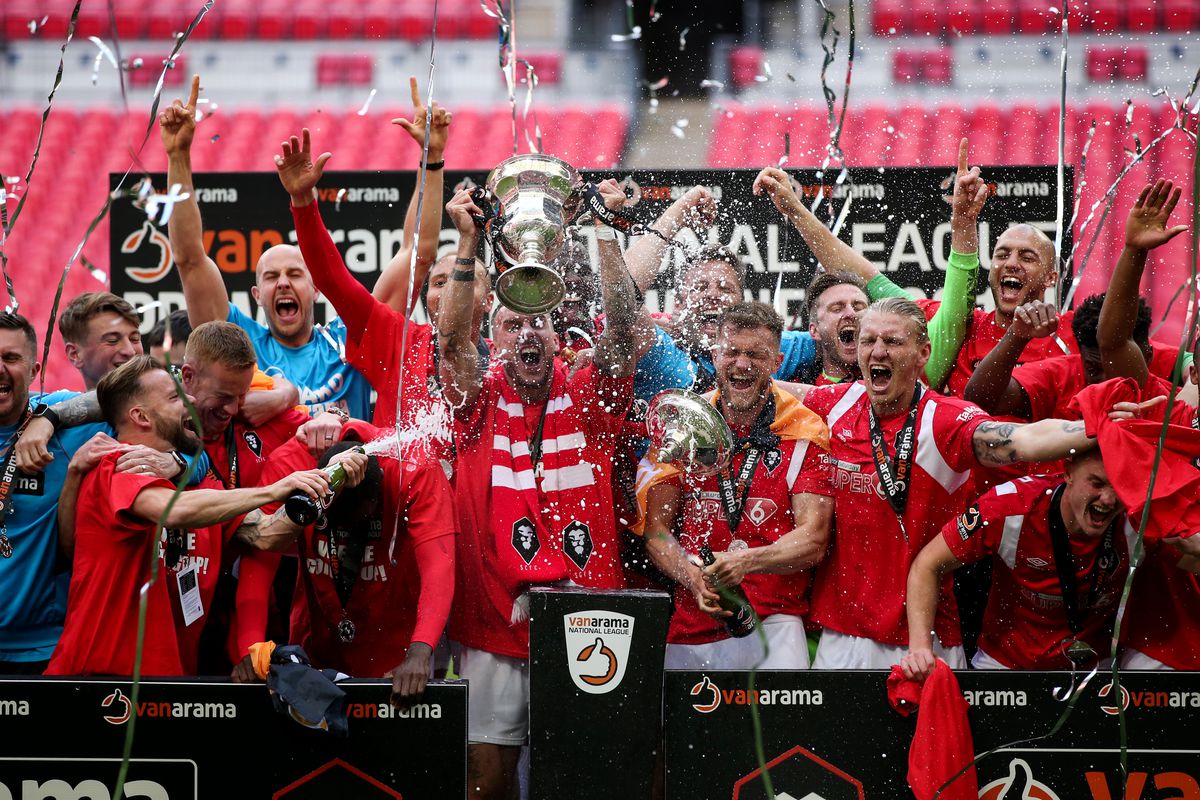
In order to get a sense of how non-league football works, you need to understand how the football pyramid in England works. It is essentially split into professional, semi-professional and amateur categories, with non-league being made up of the semi-professional and amateur levels.
The professional side of the game is the top four divisions, which comprises the Premier League, Championship, League One and League Two, whilst anything below League Two is either semi-professional or amateur and fits into the catch-all bracket of being non-league football.
Anything that comes under the remit of the Football Association is thought of as being on the football pyramid, allowing for promotion into and relegation out of the various divisions. That means that a team could, in theory at least, be promoted from a county league all the way up to the top-flight; albeit it would be an expensive journey considering the need to upgrade the likes of equipment and facilities.
The National League System, which is different from the National League itself, covers 11 different levels of football, with non-league making up the lion’s share of the various divisions that are part of the overall system.
A Quick Look at the Football Pyramid
 The football pyramid at England starts with the Premier League, which is the top-flight and sees teams like Liverpool, Manchester United and Arsenal competing to win the title. If teams struggle to do well in the division then they can be relegated out of it and into the Championship, which sits below it but remains a professional league. Three teams drop out of the Premier League through relegation, with three teams being promoted out of the Championship into the top-flight courtesy of either winning the league, coming second or winning the play-off final.
The football pyramid at England starts with the Premier League, which is the top-flight and sees teams like Liverpool, Manchester United and Arsenal competing to win the title. If teams struggle to do well in the division then they can be relegated out of it and into the Championship, which sits below it but remains a professional league. Three teams drop out of the Premier League through relegation, with three teams being promoted out of the Championship into the top-flight courtesy of either winning the league, coming second or winning the play-off final.
The teams that fail to do well in the Championship can find themselves relegated down into League One, which is still professional but is obviously of lower quality than the two divisions above it. Three teams fall out of the Championship into League One, with three teams also being promoted out of it using the same system as the Championship. That is to say, the top two teams are promoted automatically, whilst the four teams that finish between third and sixth play each other in the play-offs for the third promotion spot. Four teams get relegated to League Two.
League Two is the last of the fully professional divisions in English football and is also the lowest level in terms of overall quality. The bottom four teams from League One get relegated into it, with the extra relegation spot meaning that there is also an extra promotion spot. Three teams go up automatically by finished first to third, with the sides that finish between fourth and seven taking part in the play-offs to decide which team will take that extra space. There are only two teams relegated out of League Two into the National League, being replaced by the team that finished top and the winner of the play-off.
Non-League Football
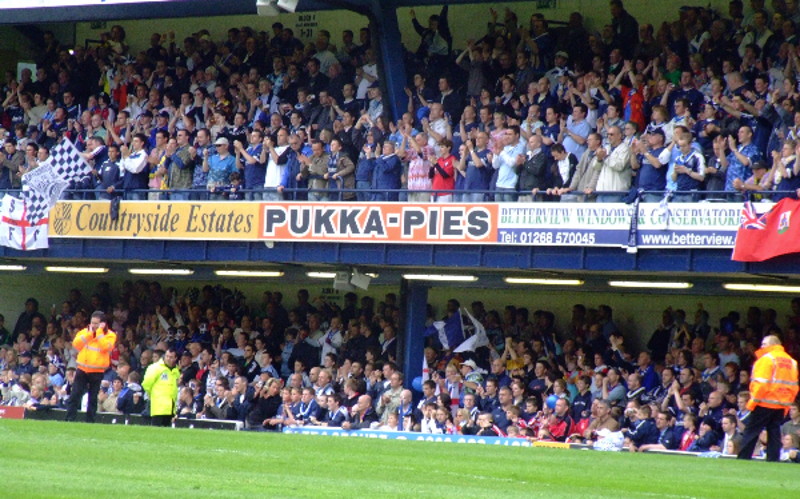
The fact that any division is often referred to as a ‘league’ when it comes to English football can add a degree of confusion around what we’re talking about. When we talk about non-league football, the ‘league’ in question is a specific reference to the English Football League, which is made up of the Championship, League One and League Two. The Premier League isn’t part of the EFL, but obviously also counts in terms of the ‘league’ in ‘non-league’. There are numerous different divisions that sit below the English Football League and therefore make up non-league.
Many of the divisions, such as the Northern League, are actually nearly as old as the English Football League itself, with the majority of the senior sides being organised by the Football Association. They organised the divisions into the National League System, which has six steps, or levels, including more than 18 different leagues that also tend to boast more than one division. If this all sounds a little bit confusing, that is because it can be. For many fans of English football, it all makes sense because they’ve seen it happen for years, but for outsiders there isn’t a lot of sense to be had.
 Non-league is a place for football players to display their talents, a place where they sweat and gain glory. Medals or trophies are the best witness of honour for players. Preparing medals for each competition can witness players’ honours, so customised Soccer Medals have a unique significance. Players’ names, competition names and other information can be displayed on the medals. The medals can not only witness the glory with the players but can also be treasured forever. The important thing is that compared to trophies, small medals are easier to collect!
Non-league is a place for football players to display their talents, a place where they sweat and gain glory. Medals or trophies are the best witness of honour for players. Preparing medals for each competition can witness players’ honours, so customised Soccer Medals have a unique significance. Players’ names, competition names and other information can be displayed on the medals. The medals can not only witness the glory with the players but can also be treasured forever. The important thing is that compared to trophies, small medals are easier to collect!
‘Re-Election’
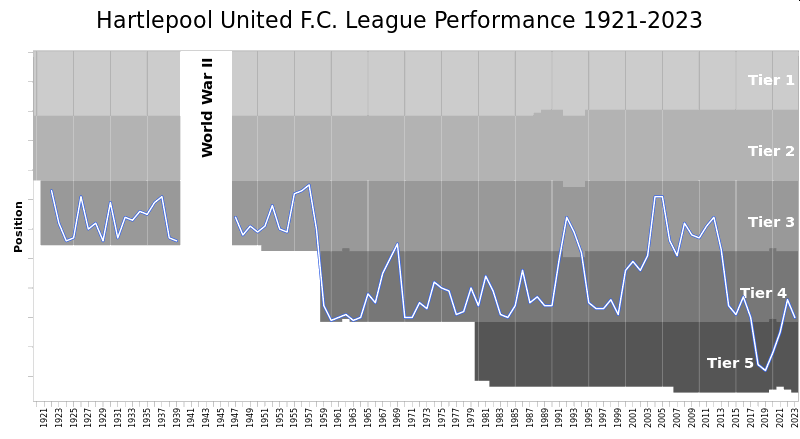
Nowadays, we take it somewhat for granted that clubs can be promoted into and relegated out of the English Football League. It definitely wasn’t always the case that that happened, however. In fact, for nearly a hundred years there was no promotion and relegation between the Football League and those divisions that made up non-league football. Instead, the process used to decide which level a team would be playing at was known as re-election and it existed as early as 1890. That was when Stoke City dropped out of the Football League and weren’t re-elected.
For the first five years of the Football League, the clubs that finished in the bottom four of the League would apply for re-election. They would be placed on a re-election rank at the conclusion of the season, at which point they would face their fellow Football League members at the Annual General Meeting. During that AGM, members of the Football League that were secure in their survival would vote to either retain the teams that were already in the league, or else to allow a non-league club that had applied for membership to be elected into the Football League instead.
Between the 1894-1895 season and the 1920-1921 campaign, the re-election process was applied to whichever clubs finished at the bottom of the league. That changed from 1920-1921 onwards, at which point the two teams that finished in the bottom two places in the Third Division North and Third Division South would be the ones that needed to apply for re-election. When they Fourth Division was formed in 1958, merging the North and South Third Divisions, the bottom four clubs of that league found themselves needing to go through the re-election process.
The creation of the Fourth Division saw numerous different teams face the process of re-election, but it also saw many of the sides that had had to go through re-election whilst in the regionalised Third Division leagues go through the process. There were also some sides that had played football in the upper echelons of the sport, such as Bradford Park Avenue, a team that played in the First Division for a three seasons, battling for re-election. In the end, they lost their cause and were replaced in the Football League with Cambridge United when the vote took place in 1970.
Here is a look at the teams that faced re-election during the Third Division North and Third Division South period:
| Team | Number of Re-Elections Faced | Year Voted Out of EFL |
|---|---|---|
| Walsall | 7 | Never |
| Exeter City | 6 | Never |
| Halifax Town | 6 | Never |
| Newport County | 6 | 1931 |
| Accrington Stanley | 5 | Never |
| Barrow | 5 | Not During Third Division Era |
| Gillingham | 5 | 1938 |
| New Brighton | 5 | 1951 |
| Southport | 5 | Not During Third Division Era |
| Rochdale | 4 | Never |
| Norwich City | 4 | Never |
| Crystal Palace | 3 | Never |
| Crewe Alexandra | 3 | Never |
| Darlington | 3 | Never |
| Hartlepools United | 3 | Never |
| Merthyr Town | 3 | 1930 |
| Swindon Town | 3 | Never |
| Aberdare Athletic | 2 | 1927 |
| Aldershot | 2 | Never |
| Ashington | 2 | 1929 |
| A.F.C. Bournemouth | 2 | Never |
| Brentford | 2 | Never |
| Chester City | 2 | Never |
| Colchester United | 2 | Never |
| Durham City | 2 | 1928 |
| Millwall | 2 | Never |
| Nelson | 2 | 1931 |
| Queens Park Rangers | 2 | Never |
| Rotherham United | 2 | Never |
| Southend United | 2 | Never |
| Tranmere Rovers | 2 | Never |
| Watford | 2 | Never |
| Workington | 2 | Not During Third Division Era |
| Bradford City | 1 | Never |
| Bradford (Park Avenue) | 1 | Not During Third Division Era |
| Brighton & Hove Albion | 1 | Never |
| Bristol Rovers | 1 | Never |
| Cardiff City | 1 | Never |
| Carlisle United | 1 | Never |
| Charlton Athletic | 1 | Never |
| Gatsehead | 1 | Not During Third Division Era |
| Grimsby Town | 1 | Never |
| Mansfield Town | 1 | Never |
| Shrewsbury Town | 1 | Never |
| Torquay United | 1 | Never |
| York City | 1 | Never |
The era of their being two leagues making up the Third Division depending on their geographical location lasted until 1958. At that point, the leagues were split, with the top teams going into the Third Division and the bottom teams making up the Fourth Division.
From 1958 onwards, the bottom four teams in the league faced the re-election process each year. During the era of the Fourth Division, 32 clubs faced re-election and five of them failed to be re-elected. Here is a look at the teams that went through the process:
| Team | Number of Re-Elections Faced | Year Voted Out of EFL |
|---|---|---|
| Hartlepool United* | 11 | Never |
| Crewe Alexandre | 7 | Never |
| Barrow | 6 | 1972 |
| Halifax Town | 6 | Never |
| Rochdale | 6 | Never |
| Southport | 6 | 1978 |
| York City | 6 | Never |
| Chester City | 5 | Never |
| Darlington | 5 | Never |
| Lincoln City | 5 | Never |
| Stockport County | 5 | Never |
| Workington | 5 | 1977 |
| Bradford (Park Avenue) | 4 | 1970 |
| Newport County | 4 | Never |
| Northampton Town | 4 | Never |
| Doncaster Rovers | 3 | Never |
| Hereford United | 3 | Never |
| Bradford City | 2 | Never |
| Exeter City | 2 | Never |
| Oldham Athletic | 2 | Never |
| Scunthorpe United | 2 | Never |
| Torquay United | 2 | Never |
| Aldershot | 1 | Never |
| Blackpool | 1 | Never |
| Cambridge United | 1 | Never |
| Colchester United | 1 | Never |
| Gateshead | 1 | 1960 |
| Grimsby Town | 1 | Never |
| Preston North End | 1 | Never |
| Swansea City | 1 | Never |
| Tranmere Rovers | 1 | Never |
| Wrexham | 1 | Never |
*The club was known as Hartlepools United until 1968, then Hartlepool FC until 1977 when it became Hartlepool United. The club holds the record for re-election, finishing in the bottom four of the Fourth Division 11 times across 28 seasons, being successful each time they applied for re-election. See graph at the top of this section.
Though they didn’t have to go through the re-election process, Accrington Stanley chose to resign from the league in 1962 and Oxford United were elected to replace them. Similarly, Port Vale had face the re-election process in 1968 having been expelled from the league earlier in the season.
Ahead of the 1986-1987 season, a decision was taken to remove the re-election process for the Fourth Division. Instead, one club would be automatically relegated out of the Football League to be replaced by a side from the developing National League System. It introduced a link between the Football League and the NLS for the first time.
History of the Non-League Football System
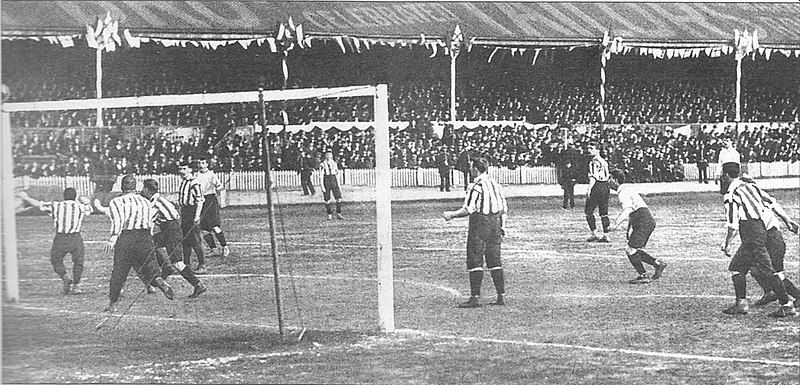
Towards the end of the 19th century, a number of different football leagues were being developed, with the Football League and the Football Alliance having pretensions to operate on the national stage and in a professional capacity.
In 1892, the Football Alliance ended up being merged into the football league, creating the Second Division. Both of the leagues that were operating were heavily weighted towards the teams from the North and Midlands, with teams from the South resisting the call the become professional. Even so, the Southern League formed in 1894 and threatened to rival the Football League.
The level of quality of the Southern League was shown by Tottenham Hotspur winning the FA Cup, being the only non-league side to manage it. The league also persuaded Bradford Park Avenue to join it in 1907, but the development of the Football League meant that clubs from other divisions were invited into it. Until the First World War, for example, the Midlands League provided most of the new teams into the Football League, with other sides coming from the likes of the Lancashire League, the Combination, the Central League and the Northern Alliance.
The Northern League decided to ban professional clubs in 1906, going on to remain amateur until 1974 and therefore rarely providing new entrants into the Football League unless the clubs that were part of it wished to turn professional anyway. The Isthmian League also remained amateur, going on to dominate the FA Amateur Cup between 1894 and 1974. There remained a patch of regional amateur and semi-professional leagues that were a network across England and Wales, being collectively known as the ‘non-league’. This was a reference to teams playing outside of the national, professional Football League, with very little movement between them.
When the Third Division was formed between a merger of the Southern League with the Football League in 1920, it saw many non-league divisions contain teams that were a mix of reserve sides from the Football League clubs and other smaller teams. When the Third Division North was created, the Central League became entirely made up of reserve terms. There were numerous changes in the years that followed, but the biggest came when the Northern Premier League was formed in 1968, drawing together the strongest non-league sides from the North of England.
More Changes Come In
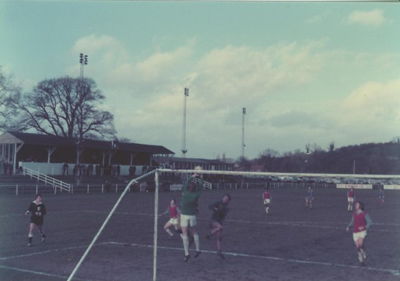
By the time that 1974 came about, the Football Association had stropped drawing a distinction between professional terms and amateur ones. There were attempts from the likes of the Isthmian League to turn professional, but by the middle of the 1980s many sides remained amateur. The Northern League continued to refuse to turn professional, allowing it to be eclipsed by the Northern Premier League. In 1979, the Alliance Premier League was formed by a group of players from the Southern Leaguer and the Northern Premier League, with the sides that remained in them becoming ‘feeder clubs’ for the ones that had made the move into the APL.
The pyramid continued to grow, but the Isthmian League remained out of it until 1985. Part of the reason why the Alliance Premier League was formed was in order to ensure that there was a single club each year that would be able to apply for Football League status, rather than seeing the vote split between several different teams. Even so, the Football League remained wary of increasing its turnover of sides and none of the early winners of the APL managed to gain election into it. More and more leagues began to be formed, acting as feeder leagues for the ones above them in the pyramid.
How The Premier League Changed Non-League Football
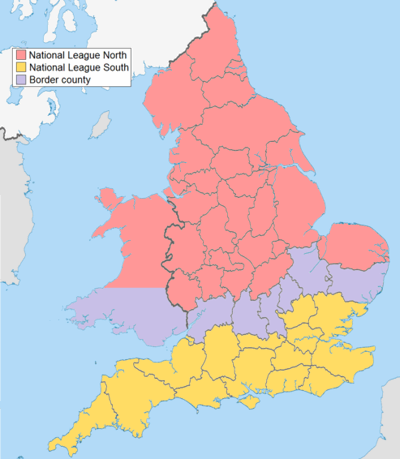
In 1992, all of the clubs that had made up the First Division chose to resign from the Football League en masse, creating a new top-flight that would be known as the Premier League. There would still be a series of promotion and relegation from the new division, but it changed the face of the football pyramid in England. For non-league sides, the creation of the Premier League saw the Fourth Division change its name to the Third Division, whilst the Isthmian League de-regionalised its second division in order to create a Second Division and a Third Division.
In 2003, the play-off system was introduced to the Conference for the first time. Now the teams that finished between second and fifth would compete against one another for the right to join the champions of the Conference in the Football League. A year later and the Football League Division Three was renamed to become Football League Two, with a new level being added below the Football Conference. It consisted of two divisions, being the Conference North and the Conference South. The existing Conference was renamed as the Conference National.
There were major changes elsewhere in non-league too. The Isthmian League’s two First Divisions became merged, whilst the boundary between it and the Southern League were redrawn. 12 clubs moved over from the Southern League to the Isthmian League, whilst 27 others moved the other way. In order to make up the numbers, no sides were relegated out of Step 4 of the football pyramid, whilst 20 clubs gained promotion out of the feeder leagues in Step 5. It was a radical shakeup of how things worked in the lower leagues, with non-league clubs feeling that they now had even more chance of making it into the Football League.
Even more changes came in the years that followed, including the Liverpool County Combination merged with the I Zingari League in order to create the Liverpool County Premier League. Meanwhile, the Somerset County League split its lower leagues from Division Two and Division Three to Division Two East and Division Two West. The East Cornwall Premier League also changed its name to the East Cornwall League, before dividing into two divisions, which were the Premier Division and Division One. Numerous other cosmetic changes took place over the years, including the addition of other leagues in the various Steps.
How Non-League Works Nowadays
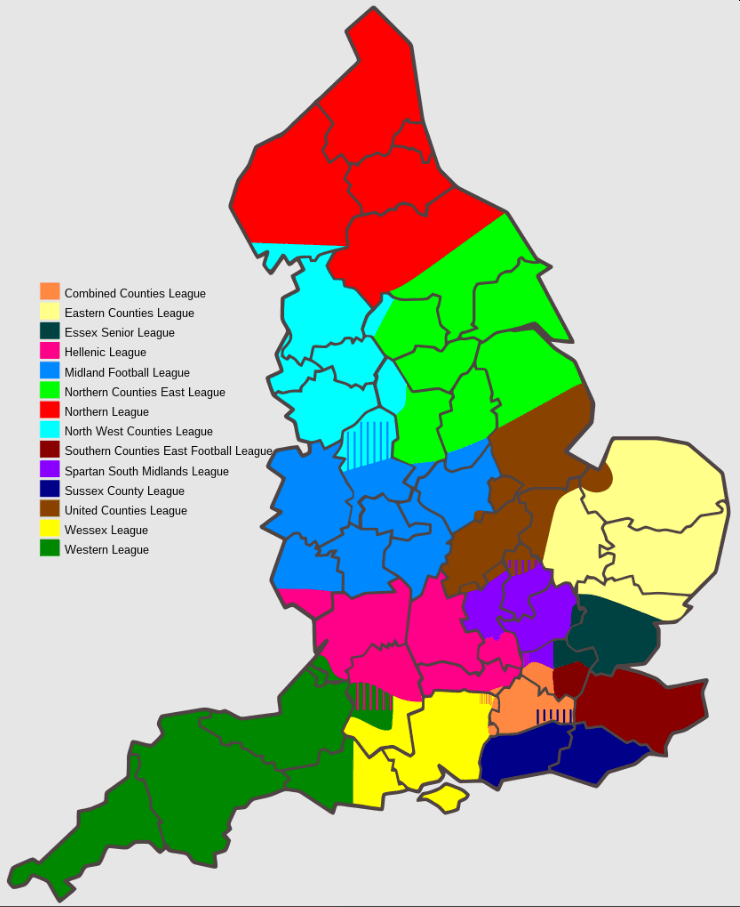
The above look at the history of non-league football is obviously fascinating, especially when you consider that we’ve really only scratched the surface of it. When automatic promotion and relegation was introduced in 1986, it changed the way non-league football began to think about itself.
Rather than only being allowed into the Football League according to the vagaries of the election process, sides could actively make their way into it by doing well in the league season. It has remained the case ever since, meaning that non-league sides can enjoy success in their own right.
Here is a look at the entire football pyramid as it exists at the time of writing:
Level 1
- Premier League
Level 2
- Championship
Level 3
- League One
Level 4
- League Two
Level 5
- National League
Level 6
- National League North
- National League South
Level 7
- Northern Premier League Premier Division
- Southern Football League Premier Central
- Southern Football League Premier South
- Isthmian League Premier Division
Level 8
- Northern Premier League Division One East
- Northern Premier League Division One Midlands
- Northern Premier League Division One West
- Southern Football League Division One East
- Southern Football League Division One West
- Isthmian League Division One North
- Isthmian League Division One South Central
- Isthmian League Division One South East
Level 9
- Northern League Division One
- Northern Counties East League Premier Division
- North West Counties League Premier Division
- Midlands League Premier Division
- United Counties League Premier Division North
- United Counties League Premier Division South
- Hellenic League Premier Division
- Spartan South Midlands League Premier Division
- Wessex League Premier Division
- Western League Premier Division
- Combined Counties League Premier Division North
- Combined Counties League Premier Division South
- Eastern Counties League Premier Division
- Essex Senior League
- Southern Combination League Premier Division
- Southern Counties East League Premier Division
Level 10
- Combined Counties League Division One
- Eastern Counties League Division One North
- Eastern Counties League Division One South
- Hellenic League Division One – 20 clubs
- Midland League Division One – 20 clubs
- North West Counties League Division One North
- North West Counties League Division One South
- Northern Counties East League League Division One
- Northern League Division Two
- South West Peninsula League Premier Division East
- South West Peninsula League Premier Division West
- Southern Combination Football League Division One
- Southern Counties East League Division One – 16 clubs
- Spartan South Midlands League Division One – 20 clubs
- United Counties League Division One – 22 clubs
- Wessex League Division One – 21 clubs
- Western League Division One
Level 11
- Anglian Combination Premier Division
- Bedfordshire County League Premier Division
- Cambridgeshire County League Premier Division
- Central Midlands League Premier Division North
- Central Midlands League Premier Division South
- Cheshire League Premier Division
- Devon County Football League
- Dorset Premier League
- Essex Alliance League
- Essex & Suffolk Border League Premier Division
- Essex Olympian League Premier Division
- Gloucestershire County League
- Hampshire Premier League Senior Division
- Herefordshire Football League Premier Division
- Hertfordshire Senior County League Premier Division
- Humber Premier League Premier Division
- Kent County League Premier Division
- Leicestershire Senior League Premier Division
- Lincolnshire League
- Liverpool County Premier League Premier Division
- Manchester League Premier Division
- Mid-Sussex League Premier Division
- Middlesex County League Premier Division
- Midland League Division Two
- Northamptonshire Combination League Premier Division
- Northern Alliance Premier Division
- North Riding League Premier Division
- Nottinghamshire Senior League Senior Division
- Oxfordshire Senior League Premier Division
- Peterborough & District League Premier Division
- Shropshire County Football League Premier Division
- Sheffield & Hallamshire County Senior League Premier Division
- Somerset County League Premier Division
- Southern Combination League Division Two
- Spartan South Midlands League Division Two
- St Piran League East Division
- St Piran League West Division
- Staffordshire County Senior League Premier Division
- Suffolk & Ipswich League Senior Division
- Surrey Premier County Football League
- Thames Valley Premier League Premier Division
- Wearside League Division One
- West Cheshire League Division One
- West Lancashire League Premier Division
- West Midlands (Regional) League Division One
- West Yorkshire League Premier Division
- Wiltshire Senior League Premier Division
- York League Premier Division
- Yorkshire Amateur League Supreme Division
It is worth bearing in mind that the exact number number teams that are in each league, as well as how many gain promotion to the one above or are relegated into the one below, can change for numerous different reasons.
As a result, we haven’t put down any specifics, but it certainly gives you a sense of just how many teams exist in the 11 Levels of the English football pyramid.
Outside the English Football Pyramid
| Level | Approximate Number of Leagues | Approximate Number of Clubs |
|---|---|---|
| 12 | 69 | 870 |
| 13 | 62 | 800 |
| 14 | 74 | 870 |
| 15 | 65 | 750 |
| 16 | 54 | 650 |
| 17 | 34 | 400 |
| 18 | 18 | 200 |
| 19 | 8 | 100 |
| 20 | 3 | 25 |
The interesting thing about the English football pyramid is that it is only specifically defined down to Level 11. There are also a wealth of leagues that go down as far as what would be Level 20. About 2,000 clubs make up the part of the pyramid that goes down to Level 11, whilst as many as around 5,000 play in Levels 12 to 20.
Rather than outline each specific league, as we have done above, the table above looks at roughly how many teams play at each level of the pyramid and over how many leagues.
Obviously the exact number of leagues and the precise number of teams that play in them can change from week to week, with numerous different factors affecting things. Teams wind up for all number of reasons, but this gives you a sense of just how deep the non-league structure actually is.
Looking at Example Clubs
Now that we know more about the way in which the non-league system works, it is worth having a look at a couple of example clubs that have managed to climb out of non-league football and into the world of the Football League.
These are far from the only clubs to have managed it, but they give you a sense of how it might work for the teams that aren’t included in the upper echelons of the footballing world but can make their way there.
Salford City
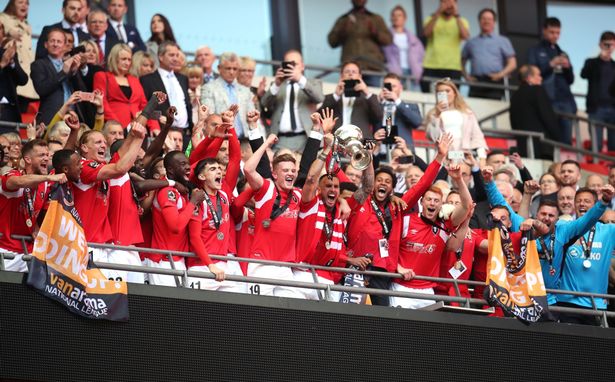
Founded as Salford Central in 1940, the club competed in local leagues until 1963, which was the point at which it was promoted to the Manchester Football League and became Salford amateurs. The club enjoyed some success during the period that followed, including being one of the sides that made up the North West Counties Football League when it was formed out of a merger between the Cheshire County League and the Lancashire Combination. It changed its name to Salford City in 1989 and many might have believed that it was designed to spend its years floating around the lower leagues.
In March of 2014, however, several of the so-called ‘Class of ’92’ of Manchester United players formed the Project 92 Limited consortium and moved to take over the club. Nicky Butt, Ryan Giggs, Gary Neville, Phil Neville and Paul Scholes all contributed money towards the takeover, with the then-Chairperson, Karen Baird, declaring it to be a ‘massive’ thing that would safeguard the club’s future. For other teams in the lower leagues it didn’t seem right, having a group of multi-millionaires ploughing their money into the team in order to ensure its success at their expense.
Regardless of the rights and wrongs of the situation, though, it worked. They gradually made their way up the divisions and in May of 2019 the club made it to the play-off final of the National League. They defeated Flyde in the final, gaining promotion to the Football League for the first time in the club’s history. The aim of the owners was to get the club as high in the English football pyramid as was possible, with promotion to League One next on the agenda. It was an aim that was later mirrored by Wrexham after the takeover of the club by Hollywood stars Ryan Reynolds and Rob McElhenney.
A.F.C. Bournemouth
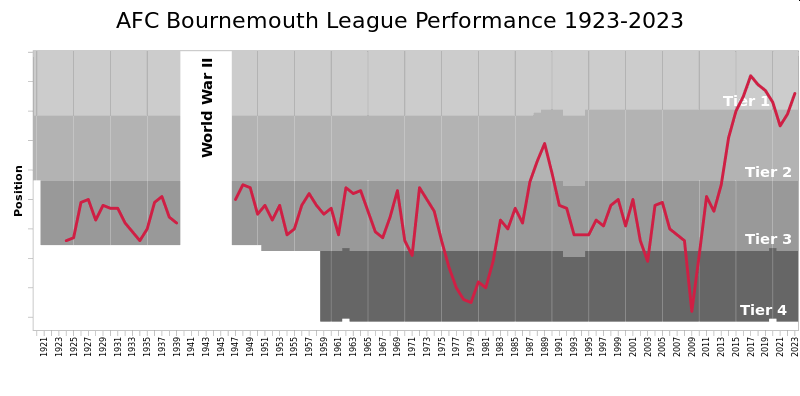
Formed in 1899 as Boscombe, the side that would later become A.F.C. Bournemouth competed in regional football leagues for the first couple of decades of its existence. In 1920 the side was promoted from the Hampshire League to the Southern League, becoming known as Bournemouth & Boscombe Athletic. Three years later and they were promoted to the Football League, spending the next 35 years in the Third Division South and winning the Third Division South Cup in 1946. When the Football League was re-organised in 1958, the club was placed into the newly created Third Division.
They were relegated up and down between divisions for a number of seasons, entering administration in 1997 and then again in 2008, being relegated down to the bottom tier of the Football League. Thanks to Eddie Howe, who would later go on to manager Saudi Arabia-owned Newcastle United, the club climbed from League Two all the way to the Premier League, playing in the English top-flight for the first time in the club’s history in the 2015-2016 season. It was a remarkable rise for a team that had spend most of its existence playing non-league football.
The Rules of Non-League Football
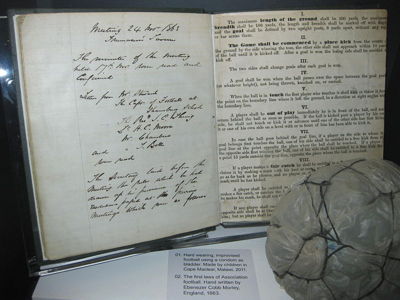
Bill Shankly once said, “Football is a simple game based on the giving and taking of passes, of controlling the ball and of making yourself available to receive a pass. It is terribly simple.” In essence, the Scottish manager, who is considered to be the founding father of modern day Liverpool Football Club, was absolutely right. In practice, of course, the game is much more complicated than that. Nowadays the existence of the Video Assistant Referee for matches in the upper echelons of the game means that technology is having an influence on the outcome of important games.
That is not the case in the lower leagues, however. It is only in the Premier League where the VAR has an influence, with non-league football never likely to have to worry about such things. It is worth noting, therefore, that the there is a huge difference between Premier League football and the football that is played in non-league divisions, if for no other reason than the teams don’t have worry about goals being ruled out provided the assistant referee keeps their flag down rather than flags to say that someone was offside. A goal will remain a goal, regardless of the opposition’s complaints.
Other than that, though, the reality is that non-league and professional football matches are basically the same. Yes, even players in League Two are going to be significantly fitter and more capable than those that play for non-league sides, so the game will look entirely different to the casual observer, but the level of play isn’t the same thing as the rules that are being played. Offside is still offside, a professional foul will still result in a red card and throw-ins will still be given if the ball happens to go out of play. There is no major difference to the rules, even if they feel like different sports.
There are also big differences to how supporters tend to enjoy the football. Ever since the Taylor Inquiry in the wake of the Hillsborough Disaster, stadiums in professional football have to be all-seater, with safe-standing options introduced in Scotland in 2016 and the Premier League from 2020 onwards. In non-league, most supporters will stand whilst they watch the games being played. They will also be allowed to drink alcohol whilst the match takes place, whereas in professional football supporters are not allowed to have alcohol if they are in view of the football pitch.